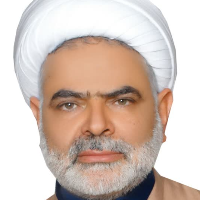Historical Investigation of the Originality of Horr Ibn e- Yazid e- Riyahi’s Grave
Author(s):
Article Type:
Research/Original Article (دارای رتبه معتبر)
Abstract:
The collection of events related to the tragic event of Ashura is in need of research and evaluation. The present article puts emphasis on the question in regard with the originality of the grave belonging toHorr Ibn e- Yazid e- Riyahi (56 After Hijrah) and it investigates two viewpoints in this regard. According to Some historical reports, Horr’s pure body was buried in a place famous for Horr’s grave by his tribe after Ashura event and the exhumation of the grave by Shah Ismail (930 After Hijrah) as well as the people’s pilgrimage are the evidence for the truth of their claim. Another viewpoint is that. his pure body was buried in a collective grave with other martyrs in Rozeh Hosseini. Relying on the descriptive-analytical research method and referring to the reliable ancient sources, this research concludes that Horr has been buried with other martyrs in a collective grave named Rotheh Hosseini
Keywords:
Language:
Persian
Published:
Hostory of Islam, Volume:19 Issue: 76, 2019
Pages:
79 to 97
https://www.magiran.com/p1996091
سامانه نویسندگان
مقالات دیگری از این نویسنده (گان)
-
The Peripatetic Interpretation of Agency and Its Impact on Ontology, Theology, and Anthropology
Hosein Pazhouhandeh *, Reza Ramezani
Hikmat - e - Islami, -
The Relationship between Fa`iliyat and Actual Essential Knowledge and Its Effect on Avicennian Ontology
Hosein Pazhohandah *, , Sadegh Shafiei
Ain - e - Hikmat, -
A Separation"’s Epistemological and Sociological Symbols
Parviz Amini *, Sayyed Ebrahim Sarparastsadat
Journal of News Sciences, -
Pattern Recognition and Critical Recognition Democracy of the Iranian Socialist Political Movement the Period of Pahlavi Era
Seyed Ebrahim Sarparastsadat*
Iranian Journal of Political Sociology,




